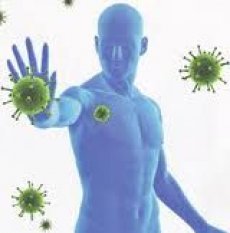New publications
Mating Neanderthals with other groups of ancient humans improved human immunity
Last reviewed: 30.06.2025

All iLive content is medically reviewed or fact checked to ensure as much factual accuracy as possible.
We have strict sourcing guidelines and only link to reputable media sites, academic research institutions and, whenever possible, medically peer reviewed studies. Note that the numbers in parentheses ([1], [2], etc.) are clickable links to these studies.
If you feel that any of our content is inaccurate, out-of-date, or otherwise questionable, please select it and press Ctrl + Enter.

Mating of Neanderthals with representatives of other groups of ancient people played an important role in the formation of the immune system of modern humans, American scientists report in an article published in the journal Science.
They claim that as a result of the mixing of Neanderthals with the Altai Man (Denisovans), whose remains were discovered in the Denisova Cave in Altai in 2008, genes emerged that to this day help people cope with various viruses.
Earlier studies indicate that up to 4% of the modern human genome can be explained by the mating of different groups of ancient people. The scientists made their conclusions based on the study of DNA chains taken from our distant ancestors.
In the human immune system, so-called tissue compatibility antigens HLA (human leucocyte antigen) play an important role in protecting against pathogens such as viruses.
Researchers claim that the origin of some antigens proves that our ancient ancestors at some point had sexual contact with Neanderthals and Altai people.
At least one variant of the antigen is now very common in people of West Asian descent but is rare in Africans.
Scientists explain this by the fact that after leaving Africa 65 thousand years ago, ancient man began to mate with his more primitive species relatives in Europe - unlike those who remained in Africa.
"The tissue compatibility antigens that Neanderthals and Altai man had adapted to living conditions in Europe and Asia over hundreds of thousands of years, while the new arrivals from Africa did not have them," explains project leader Peter Parham from Stanford University in California. "This means that those who received these genes as a result of mating had an advantage over their newly arrived relatives."
When the researchers analyzed a variant of the HLA-B*73 antigen present in modern humans, they found evidence that it was acquired through mating with Homo altaicus.
Rare material
Neanderthal remains have been found in many places in Europe and Asia, but information about Altai Man comes only from a finger and tooth found in Russia.
"We based our study on a single individual and it was amazing how informative it was and how our single gene data fits in with and complements modern genome research," says Professor Parham.
This also turned out to be true for histocompatibility antigens in the Neanderthal genome.
According to scientists, more than half of the varieties of a separate class of HLA in Europeans arose as a result of mating between Neanderthals and Altai Man. Among Asians, this number is even higher - up to 80%, and among the inhabitants of Papua New Guinea - up to 95%.
Unequal exchange
Some scientists, while not disputing that different groups of ancient people mixed with each other during the process of evolution, express uncertainty that this process is connected with our immune system.
"These conclusions must be approached with great caution, since the HLA antigen system in modern people is very diverse," says anthropologist from the American University of Wisconsin-Madison John Hawks. "In addition, it is very difficult to insert ancient genes into this part of the genome. In addition, we do not know what exactly the role of these genes was, although it is possible to hypothetically assume that they are, in some way, associated with diseases."
It is possible that the acquired genes helped humans fight viruses, but mixing with our other ancestors did not save the Neanderthals - about 30 thousand years ago they completely disappeared from the face of the earth.
Peter Parham believes that parallels can be drawn between the events of that period and the processes that took place during the European exploration of North and South America.
"Initially, small groups of Europeans explored the new land, overcoming numerous difficulties and getting to know the local population. However, as they became more and more settled in the new place, their attitude towards the local tribes became more and more hostile. They sought to seize their resources and get rid of them," says Parham.
